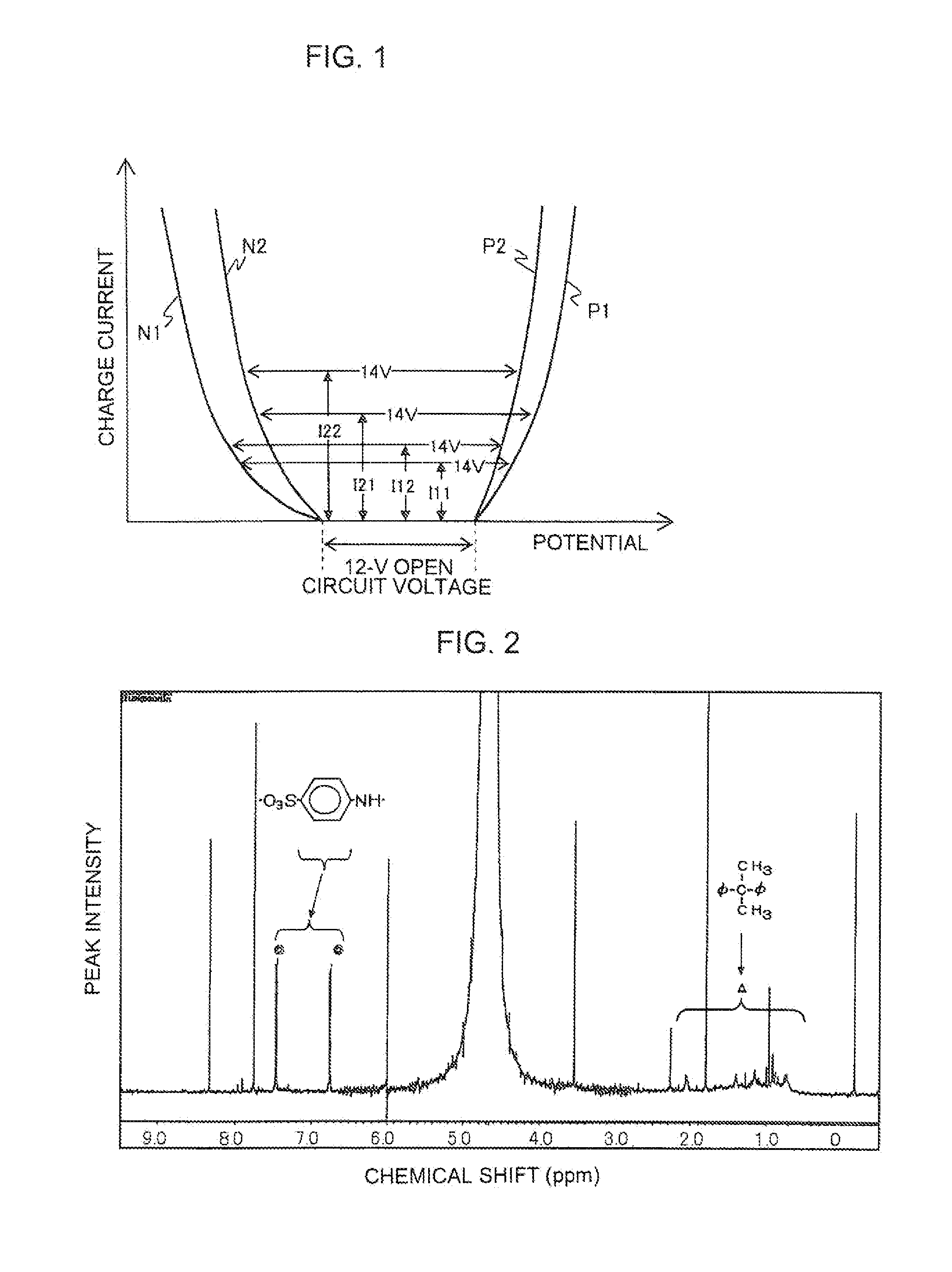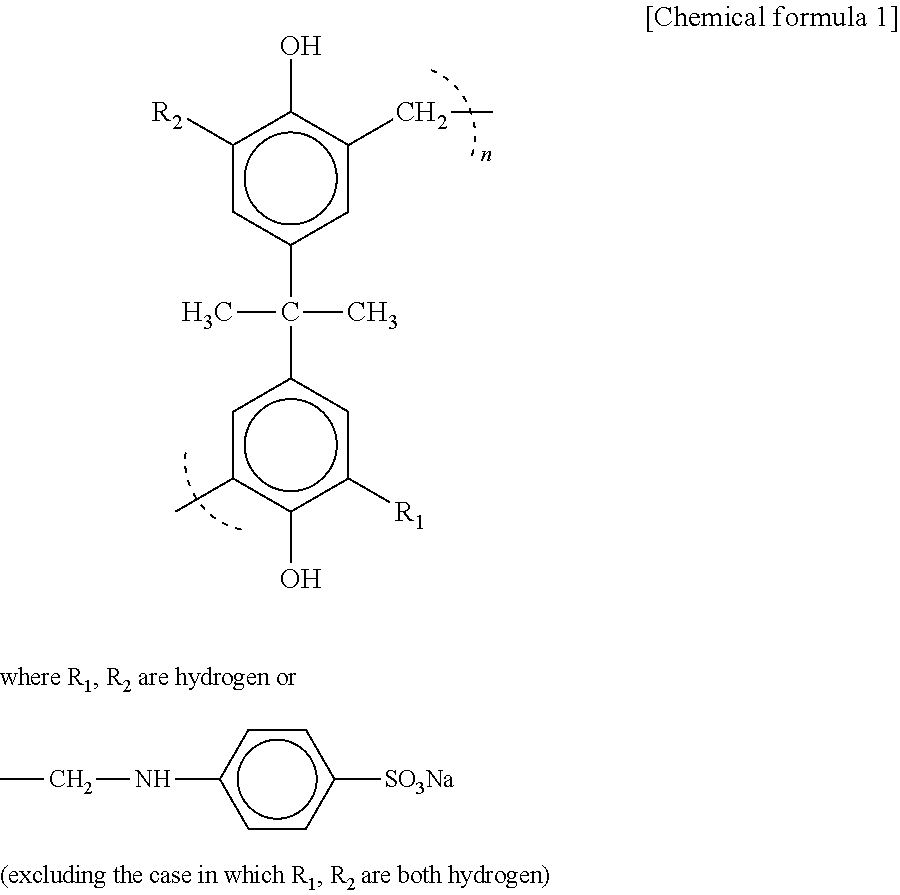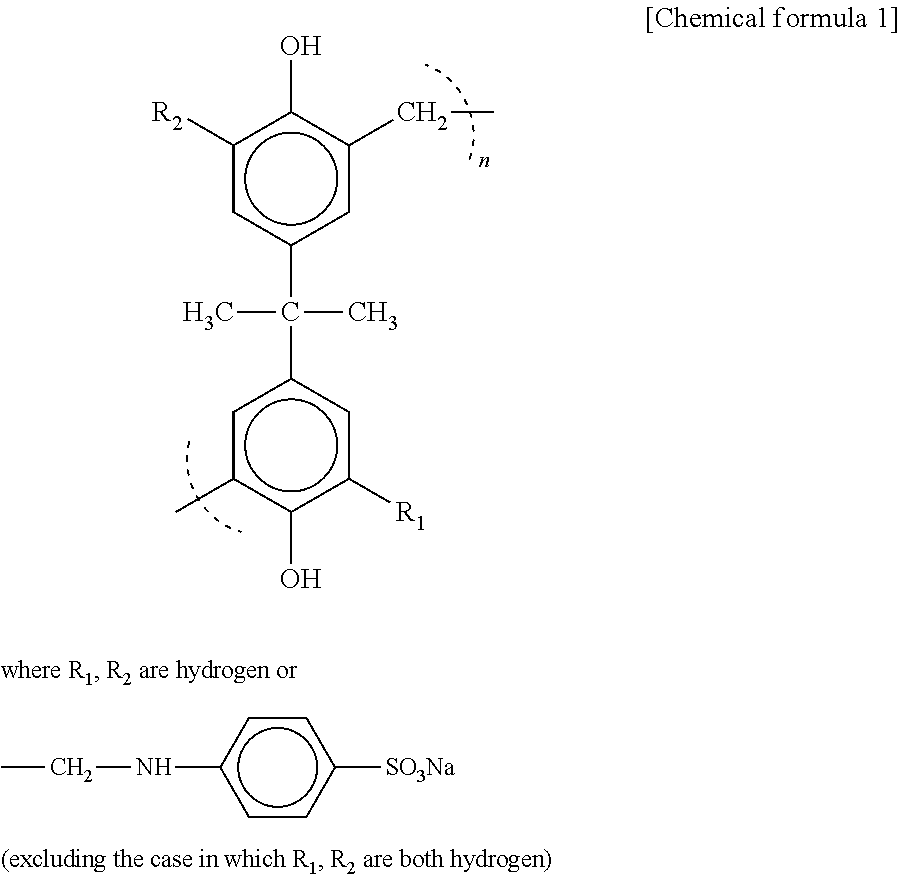Lead acid storage battery
a lead acid storage and lead acid technology, applied in the direction of secondary cell servicing/maintenance, cell component details, cell components, etc., can solve the problems of lead sulfate being difficult to return to spongy, difficult to discharge, and often insufficient charging, so as to improve charge acceptance and service life performance, and reduce the coarsening of negative active materials
- Summary
- Abstract
- Description
- Claims
- Application Information
AI Technical Summary
Benefits of technology
Problems solved by technology
Method used
Image
Examples
examples
[0075]First, an unformed positive plate was fabricated. Water was added to a mixture of lead oxide, red lead, and cut fiber (polyethylene terephthalate short fibers, likewise hereinbelow) and mixed, and the system was kneaded while adding dilute sulfuric acid in small amounts to manufacture a positive active material paste. The active material paste was packed into an expanded-type collector fabricated by expansion-machining a rolled sheet composed of a lead alloy, and the assembly was aged for 24 hours at 40° C. in an atmosphere at 95% humidity and then dried to fabricate an unformed positive plate.
[0076]Next, a n unformed negative plate was fabricated. Water was added to a mixture of lead oxide, cut fiber, barium sulfate, carbonaceous electrically conductive material, and an organic compound for reducing the coarsening of negative active material and mixed, and the system was kneaded while adding dilute sulfuric acid in small amounts to manufacture a negative active material paste...
PUM
| Property | Measurement | Unit |
|---|---|---|
| specific surface area | aaaaa | aaaaa |
| average primary particle diameter | aaaaa | aaaaa |
| specific surface area | aaaaa | aaaaa |
Abstract
Description
Claims
Application Information
 Login to View More
Login to View More - R&D
- Intellectual Property
- Life Sciences
- Materials
- Tech Scout
- Unparalleled Data Quality
- Higher Quality Content
- 60% Fewer Hallucinations
Browse by: Latest US Patents, China's latest patents, Technical Efficacy Thesaurus, Application Domain, Technology Topic, Popular Technical Reports.
© 2025 PatSnap. All rights reserved.Legal|Privacy policy|Modern Slavery Act Transparency Statement|Sitemap|About US| Contact US: help@patsnap.com



